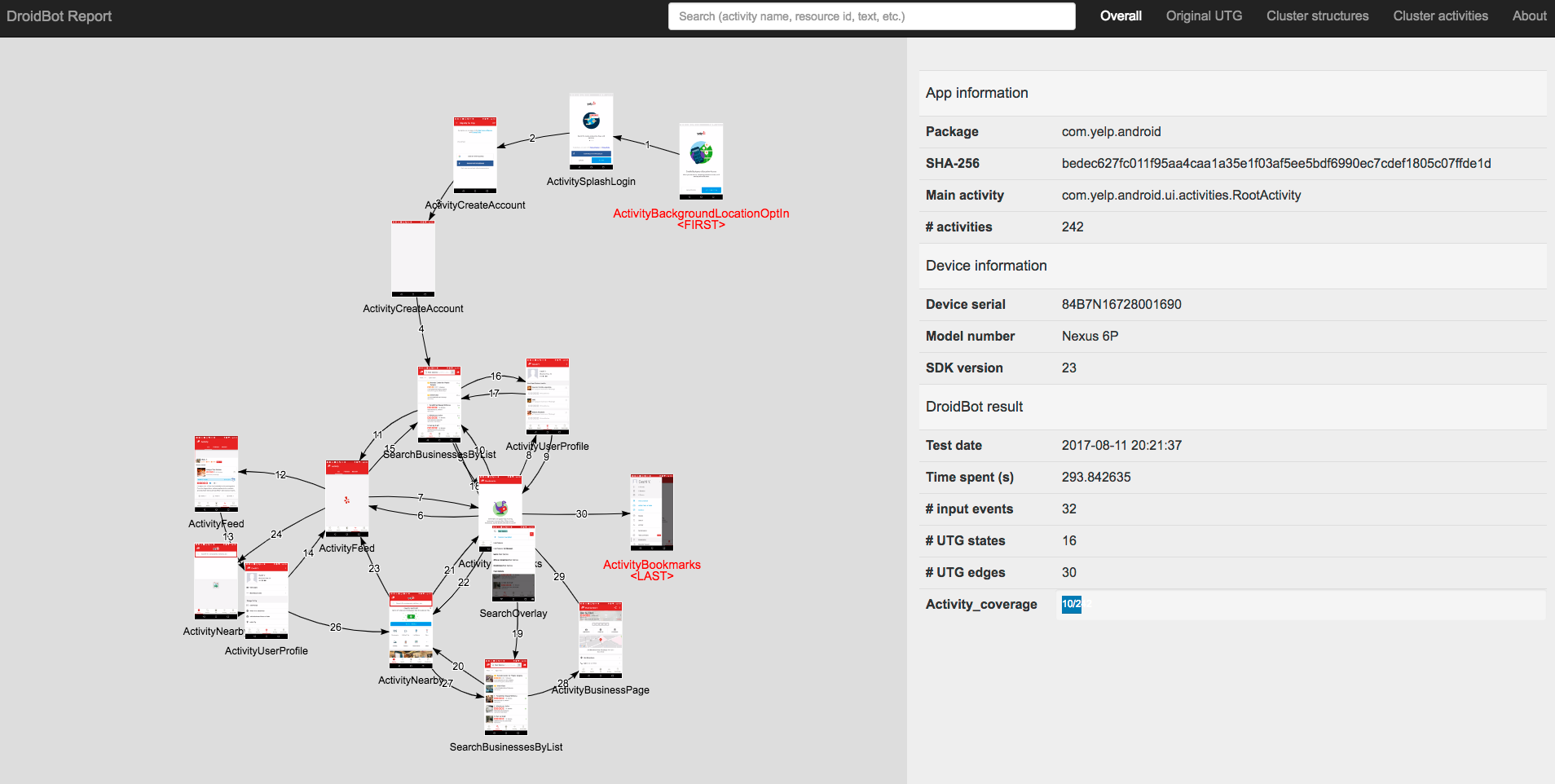DroidBot
About
DroidBot is a lightweight test input generator for Android. It can send random or scripted input events to an Android app, achieve higher test coverage more quickly, and generate a UI transition graph (UTG) after testing.
A sample UTG is shown here.
DroidBot has the following advantages as compared with other input generators:
- It does not require system modification or app instrumentation;
- Events are based on a GUI model (instead of random);
- It is programmable (can customize input for certain UI);
- It can produce UI structures and method traces for analysis.
Reference
Prerequisite
Pythonversion2.7Javaversion1.7Android SDK- Add
platform_toolsdirectory in Android SDK toPATH - (Optional)
OpenCV-Pythonif you want to run DroidBot in cv mode.
How to install
Clone this repo and intall with pip:
git clone https://github.com/honeynet/droidbot.git pip install -e droidbotIf successfully installed, you should be able to execute droidbot -h.
How to use
-
Make sure you have:
.apkfile path of the app you want to analyze.- A device or an emulator connected to your host machine via
adb.
-
Start DroidBot:
droidbot -a <path_to_apk> -o output_dirThat's it! You will find much useful information, including the UTG, generated in the output dir.
- If you are using multiple devices, you may need to use
-d <device_serial>to specify the target device. The easiest way to determine a device's serial number is callingadb devices. - On some devices, you may need to manually turn on accessibility service for DroidBot (required by DroidBot to get current view hierarchy).
- If you want to test a large scale of apps, you may want to add
-keep_envoption to avoid re-installing the test environment every time. - You can also use a json-format script to customize input for certain states. Here are some script samples. Simply use
-script <path_to_script.json>to use DroidBot with a script. - If your apps do not support getting views through Accessibility (e.g., most games based on Cocos2d, Unity3d), you may find
-cvoption helpful. - You may find other useful features in
droidbot -h.
- If you are using multiple devices, you may need to use
Evaluation
We have conducted several experiments to evaluate DroidBot by testing apps with DroidBot and Monkey. The results can be found at DroidBot Posts. A sample evaluation report can be found here.
